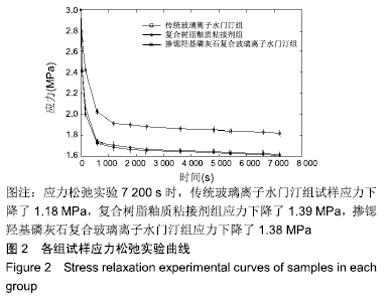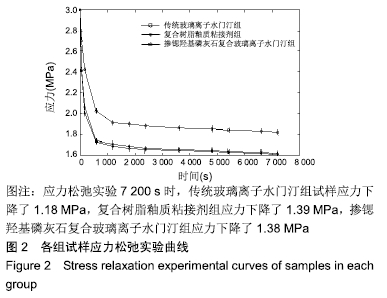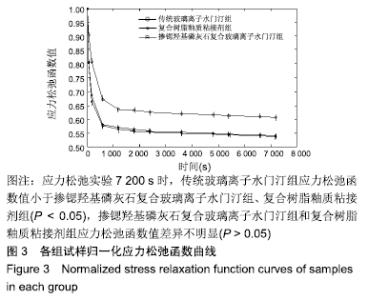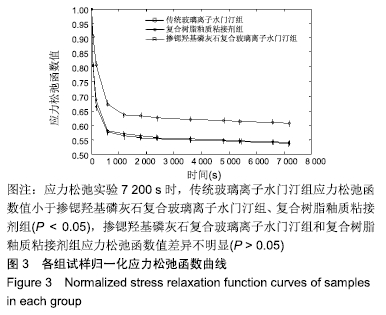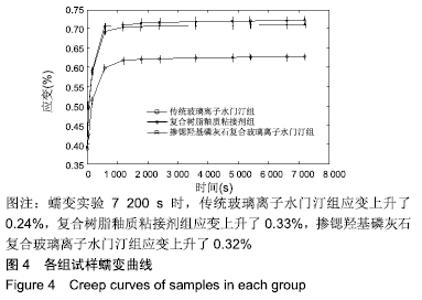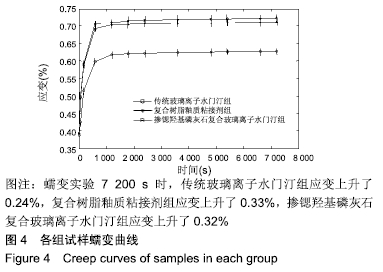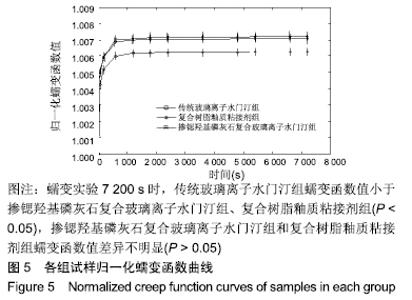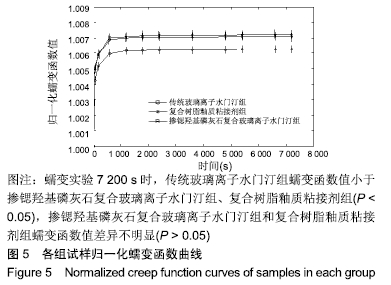[1] 陈莹,王健平,李岩,等.玻璃离子水门汀加入 Sr-HA 后机械性能的实验研究[J].黑龙江医药科学,2016,39(2):105-110.
[2] MOSHAVERINIA A, ANSARI S, MOSHAVERINIA M, et al. Effects of incorporation of hydroxyapatite and fluoroapatite nanobioceramics into conventional glass ionomer cements (GIC).Acta Biomaterialia. 2008; 4:432-440.
[3] FOTIADOU C, FRASHERI I, REYMUS M, et al. A 3-year controlled randomized clinical study on the performance of two glass-ionomer cements in Class II cavities of permanent teeth.Quintessence Int. 2019;50(8):592-602.
[4] NAGAS E, KUCUKKAYA S, EYMIRLI A, et al. Effect of Laser-ActivatedIrrigation on the Push-Out Bond Strength of ProRoot MineralTrioxide Aggregate and Biodentine in Furcal Perforations. Photomed Laser Surg.2017;35(4):231-235.
[5] DALTOÉ MO, PAULA-SILVA FW, FACCIOLI LH, et al. Expression ofMineralization Markers during Pulp Response to Biodentine andMineral Trioxide Aggregate.J Endod. 2016;42(4):596-603.
[6] SILVA LAB, PIERONI KAMG, NELSON-FILHO P, et al. Furcation Perforation: Periradicular Tissue Response to Biodentine as a Repair Material by Histopathologic and Indirect Immunofluorescence Analyses. J Endod. 2017;43(7):1137-1142.
[7] BIDRA AS, TISCHIER M, PATCH C, et al. Survival of 2039complete arch fixed implant-supported zirconia prosthe-ses : A retrospective study.J Prosthet Dent. 2018;119(2):220-224.
[8] TAHAYERI A, MORGAN M, FUGOLIN AP, et al. 3D printed versus conventionally cured provisional crown and bridge dental materials. Dent Mater.2018;34(2):192-200.
[9] FUKAZAWA S, ODAIRA C, KONDO H. Investigation of accura-cy and reproducibility of abutment position by intraoralscanners.J Prosthodont Res.2017;61(4):450-459.
[10] NAGAS E, KUCUKKAYA S, EYMIRLI A, et al. Effect of Laser-Activated、Irrigation on the Push-Out Bond Strength of ProRoot MineralTrioxide Aggregate and Biodentine in Furcal Perforations.Photomed Laser Surg. 2017;35(4):231-235.
[11] 赵玥,丁元圣,孔宇,等.羟基磷灰石-玻璃离子水门汀的机械性能、氟释放行为与抑菌效果[J].实用口腔医学杂志, 2016,32(5): 631-634.
[12] 丁元圣,赵玥,郭睿,等.含氟羟基磷灰石涂层对正畸微种植体骨结合及周围炎的影响[J]. 实用口腔医学杂志,2016,32(5):624-626.
[13] 刘莉霞,陈琳.不同类型玻璃离子水门汀的氟释放行为与溶解性[J].中国组织工程研究,2014,18(16):2480-2486.
[14] 刘莹,王富,赵三军,等.3种粘结材料对粘结纤维桩的临床疗效观察[J].牙体牙髓牙周病学杂志,2016,26(2):110-114.
[15] 刘蒂,苏葆辉,冉均国,等.羟基磷灰石改性玻璃离子水门汀的性能研究[J].硅酸盐通报,2010,29(2):440-449.
[16] 冯瑶,冯思聪,王建平,等.玻璃离子水门汀加入改良纳米羟基磷灰石后的性能[J].中国组织工程研究,2013,17(42):7382-7388.
[17] PIAO CD, LI ZW, DING J, et al. Analysis of BMSCs-intervened viscoelasticity of sciaticnerve in rats with chronic alcoholic intoxication. Acta Cirurgica Brasileira.2018; 33(10):935-991.
[18] 李正伟,吕雪漫,李新颖,等.聚乳酸-羟基乙酸导管移植修复坐骨神经损伤后的力学特性分析[J].中国组织工程研究,2017,21(6):917-923.
[19] 许东辉,黄淑华,李新颖,等.青年与老年尸体颈总动脉流变特性对比分析[J].中国组织工程研究,2017,21(16):2527-2633.
[20] 许东辉,李东原,黄淑华,等.WKY大鼠与自发性高血压模型大鼠(SHR)大脑中动脉拉伸力学特性的对比分析[J].生物医学工程研究, 2017,36(1): 86-89.
[21] NAVEAU B.Strontium: a new treatment for osteoporosis.Joint Bone Spine.2004;71(4):261-263.
[22] 刘光华.现代材料化学[M].上海:科学技术出版社,2000:245-253.
[23] 李志安.玻璃离子水门汀的改性策略[J].口腔材料器械杂志, 2018,27(2): 61-65.
[24] 巴晓兰.改性玻璃离子水门汀的研究进展[J].生物医学工程学杂志, 2005, 22(4):852-859.
|
